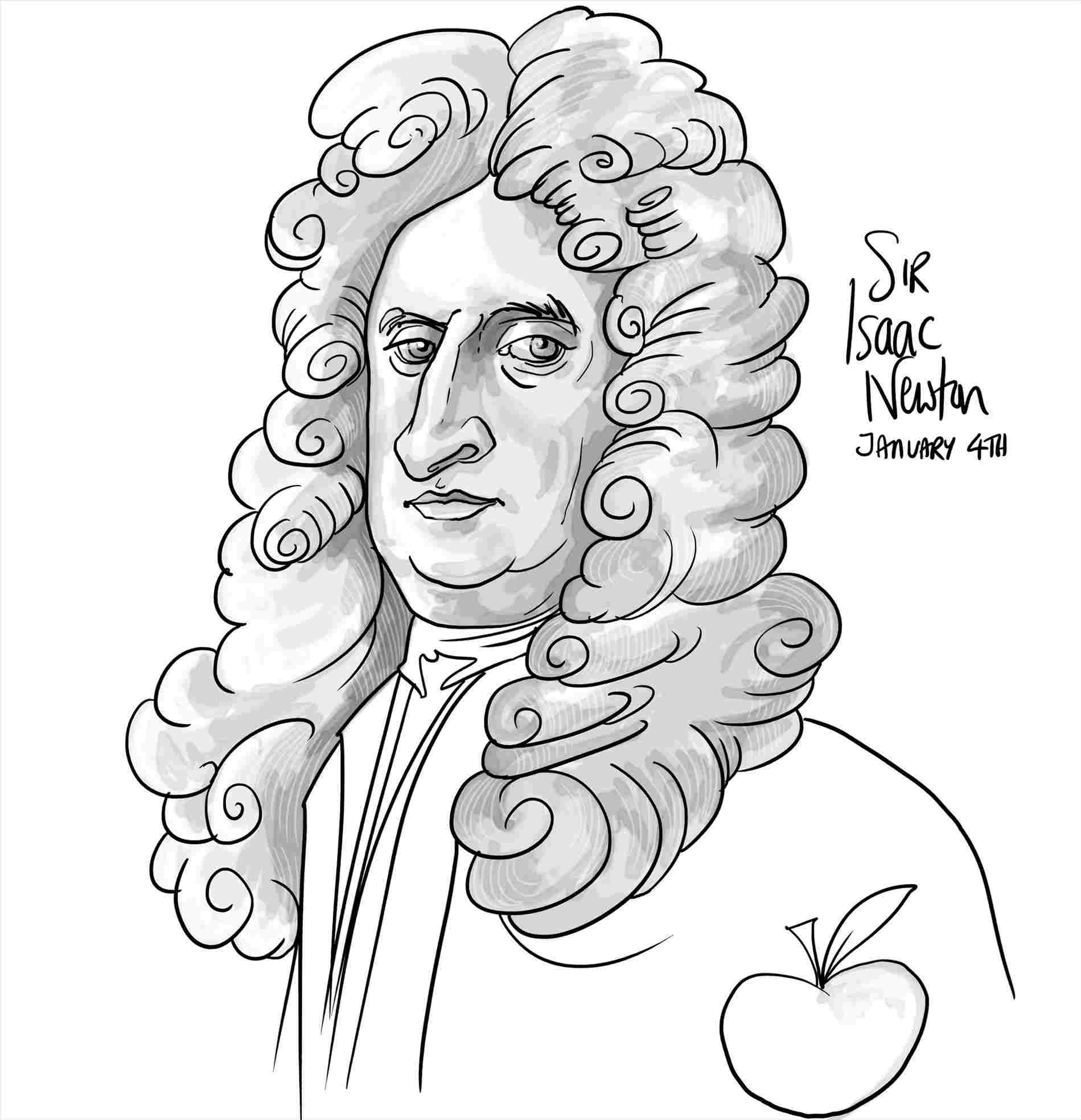Who is not familiar with the name Isaac Newton? He is considered as one of the greatest scientists of all time, and his work in physics has had a profound impact on our understanding of the universe. His most famous work, "Principia," laid the foundation for classical mechanics and was one of the most important scientific works ever written.
Editor's Notes: "Revolutionary Physics Genius: Sir Isaac Newton's Legacy Of Discovery" has published today date, which discusses his life, work, and legacy. This book is a must-read for anyone interested in the history of science or the development of modern physics.
Our team has done extensive research and analysis on "Revolutionary Physics Genius: Sir Isaac Newton's Legacy Of Discovery". In this guide, we will provide a comprehensive overview of the book, including its key takeaways and why it is important.
Key Differences or Takeaways:
Transition to main article topics:
FAQ
Frequently Asked Questions regarding Sir Isaac Newton's legacy.
Question 1: What is Sir Isaac Newton's most famous discovery?
Newton is undoubtedly best known for his formulation of the three laws of motion and universal gravitation, which laid the foundation for classical mechanics.
Question 2: What other notable contributions did Newton make?
Besides his work in physics, Newton also made significant contributions to mathematics, optics, and alchemy. He developed calculus independently of Leibniz, created a reflecting telescope, and proposed a theory of colors.
Question 3: What was Newton's personality like?
Newton was known for his solitary nature, meticulousness, and intense focus on his work. He could be secretive and competitive, but he also had a deep religious faith and a strong belief in the power of reason.
Question 4: How did Newton's work impact science?
Newton's laws and theories revolutionized physics. They provided a framework for understanding the motion of objects in the universe and laid the groundwork for the development of modern science and technology.
Question 5: What are some common misconceptions about Newton?
One common misconception is that Newton discovered gravity by being hit by an apple. While the apple incident may have inspired his thoughts on gravity, his theory was the result of years of careful observation and mathematical calculations.
Question 6: How is Newton's legacy still relevant today?
Newton's work continues to shape our understanding of the universe. His laws of motion and gravitation are still used in engineering, astronomy, and other fields. His contributions to mathematics and optics also have had a lasting impact on modern science.
Summary: Sir Isaac Newton was a brilliant scientist whose discoveries revolutionized our understanding of the universe. His legacy extends beyond his individual contributions, as his work laid the foundation for much of modern science and technology.
Tips
Mastering physics involves understanding the fundamental principles and applying them creatively. Here are a few tips inspired by the legacy of Sir Isaac Newton, the revolutionary physics genius, to enhance your understanding and problem-solving abilities in physics:
Tip 1: Grasp the Basics: Start by building a solid foundation in the core concepts of physics. Study Newton's laws of motion and gravitation, delve into electromagnetism, and explore thermodynamics. A firm grasp of these fundamentals will serve as the cornerstone for your future endeavors in physics.
Tip 2: Problem-Solving Techniques: Cultivate a systematic approach to solving physics problems. Break down complex problems into smaller, manageable parts. Consider the forces acting on objects, apply Newton's laws, and utilize energy conservation principles. With practice, you'll develop the ability to analyze and solve physics problems efficiently and accurately.
Tip 3: Seek Conceptual Understanding: Don't be satisfied with merely memorizing formulas and solving problems. Strive for a deep conceptual understanding of the underlying principles. Visualize the concepts, draw diagrams, and connect them to real-world examples. True comprehension goes beyond calculations and fosters a genuine appreciation for the beauty and elegance of physics.
Tip 4: Explore Applications in the Real World: Physics is not just a theoretical subject. Its principles have myriad applications in various fields like engineering, medicine, and technology. Explore how Newton's discoveries have revolutionized our understanding of the universe and shaped modern society. Applying physics to practical problems fosters an appreciation for its relevance and impact.
Tip 5: Embrace the Power of Imagination: Physics is as much an art as it is a science. Don't be afraid to think outside the box and explore unconventional ideas. Engage in thought experiments, pose hypothetical scenarios, and challenge established notions. Imagination fuels creativity and often leads to groundbreaking discoveries.
Remember, the pursuit of physics is akin to embarking on an adventurous journey. Embrace the challenges, marvel at the wonders of the universe, and forever seek deeper knowledge and understanding. As Newton once remarked, "If I have seen further, it is by standing on the shoulders of giants." Stand on the shoulders of Newton and his successors, and contribute to the ever-expanding tapestry of physics.
To delve deeper into the legacy and discoveries of Sir Isaac Newton, explore Revolutionary Physics Genius: Sir Isaac Newton's Legacy Of Discovery, an article that unveils the transformative impact of his work on the world of physics.
By incorporating these tips into your learning process, you can emulate Newton's spirit of inquiry and unlock your potential to master physics and make your own mark on this fascinating field.
Revolutionary Physics Genius: Sir Isaac Newton's Legacy Of Discovery
Sir Isaac Newton's groundbreaking contributions revolutionized physics and shaped scientific thought for centuries. His legacy encompasses profound discoveries that transformed our understanding of the natural world.
- Universal Gravitation: Unveiled the force governing celestial bodies' motion.
- Laws of Motion: Defined the fundamental principles of motion and inertia.
- Calculus: Invented a powerful mathematical tool for understanding change and motion.
- Optics: Pioneered investigations into the nature of light and its properties.
- Methodological Revolution: Established a scientific method based on empirical observation and experimentation.
- Philosophical Impact: His theories challenged prevailing beliefs and influenced Enlightenment thought.
These key aspects of Newton's legacy intertwine to demonstrate his exceptional intellect and transformative contributions to science. His universal gravitation theory revolutionized astronomy and explained the celestial bodies' orderly motion. The laws of motion, a cornerstone of classical physics, describe the behavior of objects in motion. Calculus, a mathematical marvel, enables scientists to analyze complex phenomena involving change. Newton's investigations in optics laid the groundwork for modern optics and our understanding of light. His methodological revolution emphasized the importance of empirical data, shaping the scientific process. Moreover, Newton's philosophical impact extended beyond science, influencing the Enlightenment's emphasis on reason and rational thought. Together, these aspects form a testament to Sir Isaac Newton's brilliance and profound legacy.

Sir Isaac Newton and Discovery of Gravitation Theory Apple Falling from - Source www.dreamstime.com

Sir Isaac Newton and Discovery of Gravitation Theory Apple Falling from - Source www.dreamstime.com
Revolutionary Physics Genius: Sir Isaac Newton's Legacy Of Discovery
The connection between "Revolutionary Physics Genius: Sir Isaac Newton's Legacy Of Discovery" and Newton's discoveries is profound. His annus mirabilis, or "year of miracles", in 1666, saw him develop his three major scientific breakthroughs: calculus, optics, and the laws of motion. Calculus, essential for understanding rates of change, has revolutionized fields like engineering, economics, and medicine. Optics, the study of light and its interactions, led Newton to advancements in telescopes and the wave-particle duality of light. His laws of motion, which describe the behavior of physical objects under forces, laid the groundwork for classical mechanics and engineering. Newton's legacy is intertwined with the very foundations of modern physics.

Sir Isaac Newton Drawing at PaintingValley.com | Explore collection of - Source paintingvalley.com
Newton's discoveries transformed our understanding of the natural world. His laws of motion allowed us to predict the trajectories of objects, from celestial bodies to projectiles, while his laws of gravity unified celestial and terrestrial physics. Optics led to significant advances in telescopes and precision instruments, broadening our understanding of the universe and the properties of light. Calculus, used in countless fields, enables us to model complex systems, solve differential equations, and analyze probability distributions, deeply influencing science and mathematics.
In conclusion, "Revolutionary Physics Genius: Sir Isaac Newton's Legacy Of Discovery" provides in-depth insights into Newton's groundbreaking contributions to the world of physics. His influence extends far beyond his own era, shaping our understanding of the universe and laying the groundwork for scientific advancements to this day. Newton's legacy serves as a testament to the power of curiosity, intellectual rigor, and the pursuit of knowledge.